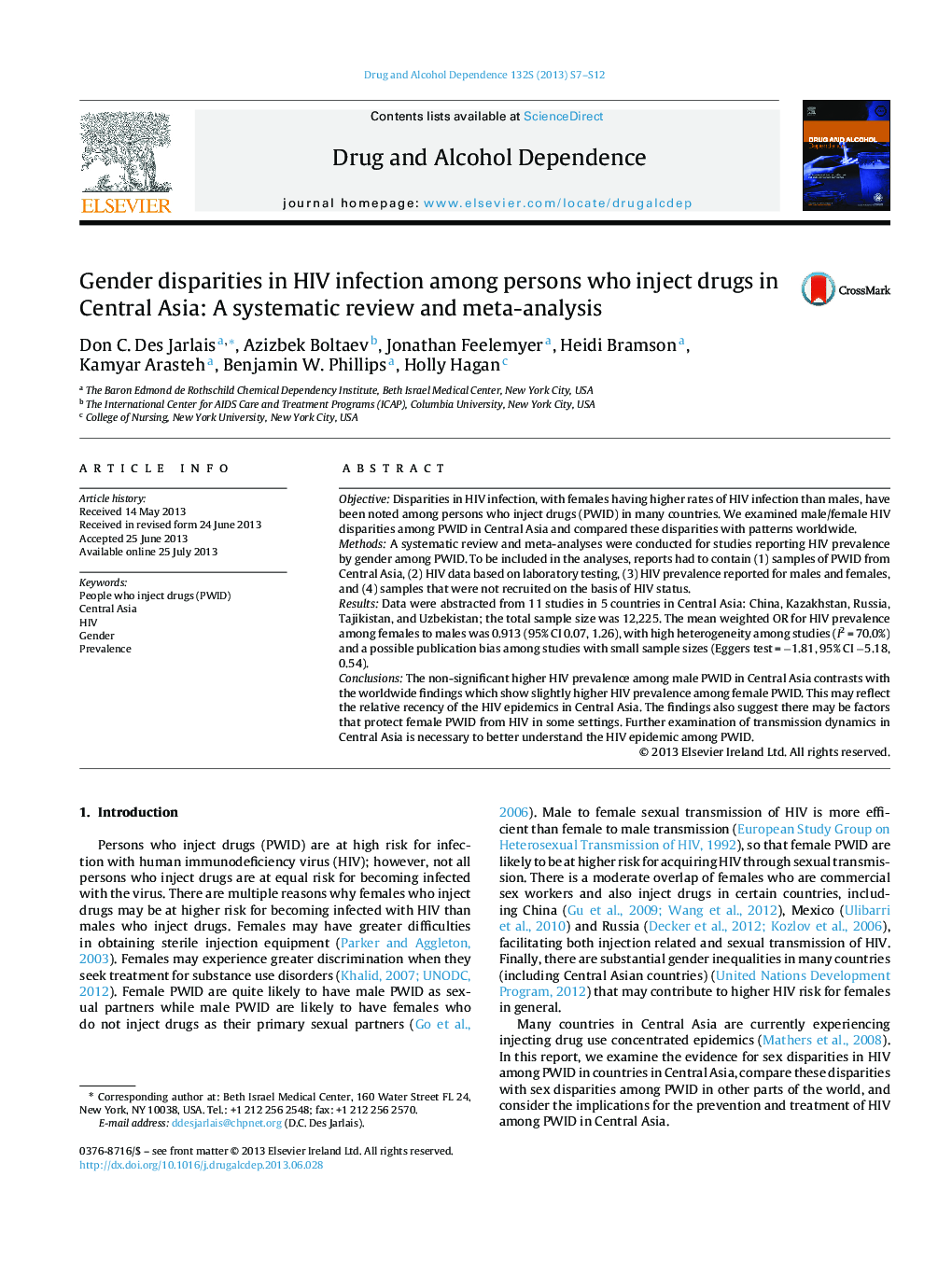| Article ID | Journal | Published Year | Pages | File Type |
|---|---|---|---|---|
| 1069908 | Drug and Alcohol Dependence | 2013 | 6 Pages |
ObjectiveDisparities in HIV infection, with females having higher rates of HIV infection than males, have been noted among persons who inject drugs (PWID) in many countries. We examined male/female HIV disparities among PWID in Central Asia and compared these disparities with patterns worldwide.MethodsA systematic review and meta-analyses were conducted for studies reporting HIV prevalence by gender among PWID. To be included in the analyses, reports had to contain (1) samples of PWID from Central Asia, (2) HIV data based on laboratory testing, (3) HIV prevalence reported for males and females, and (4) samples that were not recruited on the basis of HIV status.ResultsData were abstracted from 11 studies in 5 countries in Central Asia: China, Kazakhstan, Russia, Tajikistan, and Uzbekistan; the total sample size was 12,225. The mean weighted OR for HIV prevalence among females to males was 0.913 (95% CI 0.07, 1.26), with high heterogeneity among studies (I2 = 70.0%) and a possible publication bias among studies with small sample sizes (Eggers test = −1.81, 95% CI −5.18, 0.54).ConclusionsThe non-significant higher HIV prevalence among male PWID in Central Asia contrasts with the worldwide findings which show slightly higher HIV prevalence among female PWID. This may reflect the relative recency of the HIV epidemics in Central Asia. The findings also suggest there may be factors that protect female PWID from HIV in some settings. Further examination of transmission dynamics in Central Asia is necessary to better understand the HIV epidemic among PWID.
